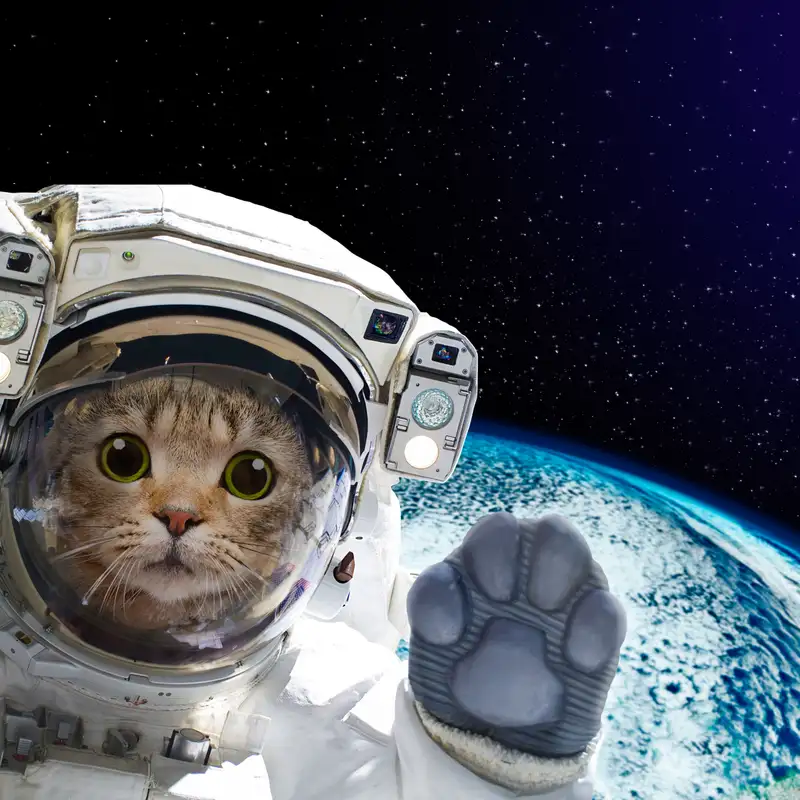From Gods to Space: The Untold History of Cats
Welcome to We're All Ears, the podcast where we explore the fascinating connection between sound, behavior, and animal wellness. I'm your host, Janet Marlow, sound behaviorist, composer, and founder of Pet Acoustics. Today, we're diving into the mysterious and marvelous contributions of one of the world's most beloved companions, the cat. These whiskered wonders have left their paw prints on every corner of history, from ancient temples to modern science labs, from ship decks to outer space. Yes, cats have even been to outer space.
Janet Marlow:So curl up with your favorite feline, and let's journey through time to discover how cats have helped shape the world we live in. Let's begin in ancient Egypt, where cats were worshipped as divine protectors. The goddess Bastet, half feline, half woman, was revered as the guardian of home and hearth. Families welcomed cats not just for companionship, but as powerful allies against pests and disease. In fact, harming a cat was a crime.
Janet Marlow:These animals were seen as sacred guardians of balance between the natural and spiritual world. Their role in safeguarding grain stores by hunting rodents made them one of the earliest and most effective forms of biological pest control. During the Middle Ages in Europe, cats faced a darker chapter. Wrongly associated with witchcraft and evil, many were killed en masse just as the bubonic plague began to spread. But fewer cats meant more rats, and more rats meant more fleas, the true carriers of the disease.
Janet Marlow:Historians now believe this feline purge unintentionally worsened the plague's impact. If cats had been spared, the course of European history might have looked very different. Onward to the age of exploration. Sailors knew the value of a cat on board. Not only did they keep rats away from food stores, but they also served as morale boosters on long isolated voyages.
Janet Marlow:One famous ship cat, Simon of the HMS Amethyst, received the Dickin Medal for his service during the Chinese Civil War. Despite being wounded, Simon continued to protect supplies and comfort the crew, earning the highest honor an animal can receive in military service. And now up, up, and away, in 1963, a cat named Phyllisette became the first feline in space. Launched by France, she traveled 97 miles above Earth in a specially designed capsule. Electrodes had been implanted in her brain to study how space travel affects neurological activity.
Janet Marlow:Felicette's journey was brief but historic. She returned safely to Earth, and although her story was nearly forgotten, in recent years, she's been honored with statues and tributes recognizing her as a true space pioneer. This cat helped pave the way for human understanding of space biology, one giant leap for feline kind. Back on Earth, cats continue to inspire. Writers like Hemingway and TS Eliot celebrated them in verse and story.
Janet Marlow:Internet culture catapulted them into viral stardom, and their behavior is still teaching us about emotional regulation and sensory awareness. In fact, cats' acute hearing, capable of detecting frequencies far beyond human range, has helped guide our research here at Pet Acoustics. Their sensitivity to sound is exactly why we developed calming frequency specific music to reduce feline stress. Cats hear the world on a different scale than we do. While the human hearing range tops around 20,000 hertz, a cat's hearing can reach up to an astonishing 85,000 hertz.
Janet Marlow:That means cats can detect high frequency sounds we're completely unaware of and everything from tiny rodent squeaks to the subtle buzz of electronics. Now think about that in the context of your home. Sounds like loud TVs, vacuum cleaners, even certain alarms can be overwhelming for them. That's why curating a calm, intentional sound environment is not just a luxury. It's part of their well-being in today's homes.
Janet Marlow:Soft, species specific music designed with feline hearing in mind can help create that comfort zone. It can reduce stress, promote relaxation, and even improve behavior by giving them an auditory landscape that feels safe rather than chaotic. If we take time to understand how differently our cats experience sound, we can make simple adjustments that have a real impact on their health and happiness. From ancient altars to outer space, cats have quietly helped shape civilization one pause step at a time. They have comforted us, protected us, and lived their own way and taught us how to listen.
Janet Marlow:If you enjoyed this episode of We're All Ears, share it with a fellow cat lover, and don't forget, tap the music icon on the Pet Acoustics app to subscribe and unlock daily comm for your feline companion. Your cat will love you for it. Until next time, I'm Janet Marlow. Thanks for listening. And remember, when it comes to your pet's wellness, we're all ears.

